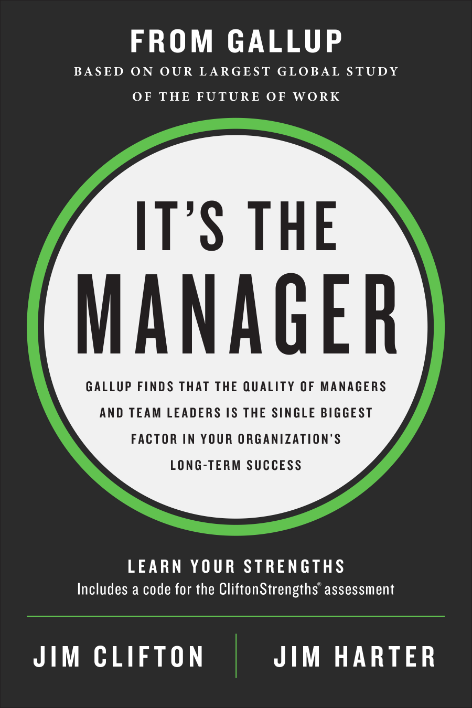Story Highlights
- Employees feel less prepared and informed amid prolonged disruption
- Leaders need to refocus efforts on employee engagement and wellbeing
- Managers need individualized support and communication
COVID-19 coupled with the fight for racial equality and social justice are directly affecting your teams in the workplace. No resilience initiative or crisis communication training session could have fully prepared organizations for today's reality.
Most leaders are determined to help their people. But they're mistaken if they assume their employees are well informed and equipped because sufficient time has passed since the pandemic began.
In fact, employee preparedness and alignment are trending down. Gallup Panel data from June 8-14 show that U.S. employees and managers are about 20% less likely than they were in May 2020 to strongly agree that:
- they feel well prepared to do their job
- their employer has communicated a clear plan of action in response to COVID-19
- their immediate supervisor keeps them informed about what's going on in their organization
- their organization cares about their overall wellbeing

A bar graph shows the following data: "My employer has communicated a clear plan of action in response to COVID-19" dropped from 54% to 41% strongly agree; "I feel well prepared to do my job" and "My immediate supervisor keeps me informed about what is going on in my organization" each from 50% to 41%; "My organization cares about my overall wellbeing" from 51% to 42%.
At the start of the pandemic, leaders jumped to action to protect employees, retain customers and secure their organization's future. Through the first 10 weeks of the crisis, leaders sustained efforts to keep their people informed, engaged and safe.
However, Gallup's latest data suggest that leaders' COVID-19 communication efforts have slipped. The protracted, dynamic nature of the pandemic has left many feeling weary and longing for the finish line. But for the employees who look to leadership for communication and direction, COVID-19 challenges are still alive and well.
Three ways leaders can meet employees' needs now
Leaders must reinvigorate their efforts to ensure employees are well informed and prepared. These efforts are especially critical while circumstances are quickly evolving as states reopen -- or pause their plans to reopen.
Gallup data show that younger, frontline, blue-collar, on-site employees struggle more with feeling informed, cared for and prepared than do older, white-collar, remote-working employees. The former groups of workers are even more vulnerable than the latter to performance setbacks if leaders allow COVID-19 efforts to wane. As leaders and managers earnestly invest in employees, they should pay special attention to these groups of individuals.
If employees don't feel supported or informed, their performance, engagement and wellbeing are on the line -- which puts bottom-line outcomes at risk too.
Gallup's June 2020 data reveal three strategies that can help leaders meet employees' needs during these unprecedented social, financial and health crises.
1. Start with managers.
Managers are extraordinarily stressed. Compared with May 2020, they're less engaged, informed and prepared. They also have worse work-life balance and physical wellbeing than their team members. In turn, their teams are ill-prepared and weighed down by burnout.

A bar graph shows the following data for managers: "I feel well prepared to do my job" dropped from 56% to 45% strongly agree; "My immediate supervisor keeps me informed about what is going on in my organization" from 54% to 39%; "My organization cares about my overall wellbeing" from 50% to 42%.
Managers are the linchpin of the employee experience -- in fact, they account for an astounding 70% of the variance in team engagement. Leaders who make time to support their managers will see powerful returns as their managers unlock human motivation and cultivate performance excellence in trying times.
To start, leaders should get better at having one-on-one conversations with managers and providing tools and resources -- especially training on how to manage dispersed workforces and have effective coaching conversations. Leaders must frequently clarify the organization's mission and direction to help managers establish priorities. Many leaders can relate to the pressures and responsibilities managers feel as team leaders. They can rely on their firsthand experience to listen and offer support.
By being understanding, leaders can address challenges, inspire managers and strengthen trust.
2. Communicate like never before.
Leaders have an uphill battle when it comes to relaying information about the rapid-fire changes at hand. To rise to this challenge, leaders should create novel communication channels for clarifying expectations and offering support.
For instance, local task forces and specialized leadership roles can quickly share updates and identify bottlenecks and breakdowns. When leaders decentralize communication and empower local levels to share information and make decisions, teams can better react to the needs of the moment.
Managers are perhaps the most important communication channel. They are uniquely positioned to support and coach employees. To this end, leaders should hold managers accountable for maintaining a two-way exchange with their teams. The best managers provide consistent, meaningful feedback, ask questions and value employees' opinions.
If employees don't feel supported or informed, their performance, engagement and wellbeing are on the line -- which puts bottom-line outcomes at risk too.
Ongoing dialogue drives performance because it demonstrates that leaders and managers genuinely care. For example, leaders who share how they're supporting employees financially during this time can foster hope and resilience. Leaders build trust when they reiterate their commitment to doing what's right -- then reflect that commitment in their actions, decisions and business strategies.
3. Listen and individualize.
Not all employees experience the same challenges during a crisis. What pressures are they facing at home or with their children? How is their wellbeing? Do they feel safe at work? Leaders and managers must learn each employee's needs and uniquely support each person.
Effective managers care about employees as real people, which drives engagement. They ask questions and listen actively. They see themselves as a coach whose top priority is developing and supporting each individual. More than ever, employees need managers who use personalized messages to demonstrate understanding and empathy.
The best leaders and managers do more than maintain a dialogue. They use reliable, smart employee analytics -- like insights about whether employees feel their opinion matters and that someone cares about their development -- to inform their ongoing interventions.
Leaders and managers must learn each employee's needs and uniquely support each person.
Employees are far more than human capital; they're real people facing painful circumstances. Leaders can't solve every problem or answer every question. But there's one thing they can always do -- authentically care. When they get this right, they create a workplace where emotional connections are deep, innovation is second nature, and employees are resilient and thriving.
Get the support you need to support your people.
- Partner with Gallup for actionable, timely solutions to navigate uncertainty.
- Explore our resources for leading through disruption.
- Download our latest insights on developing a work-from-home-strategy that makes sense for your business.




